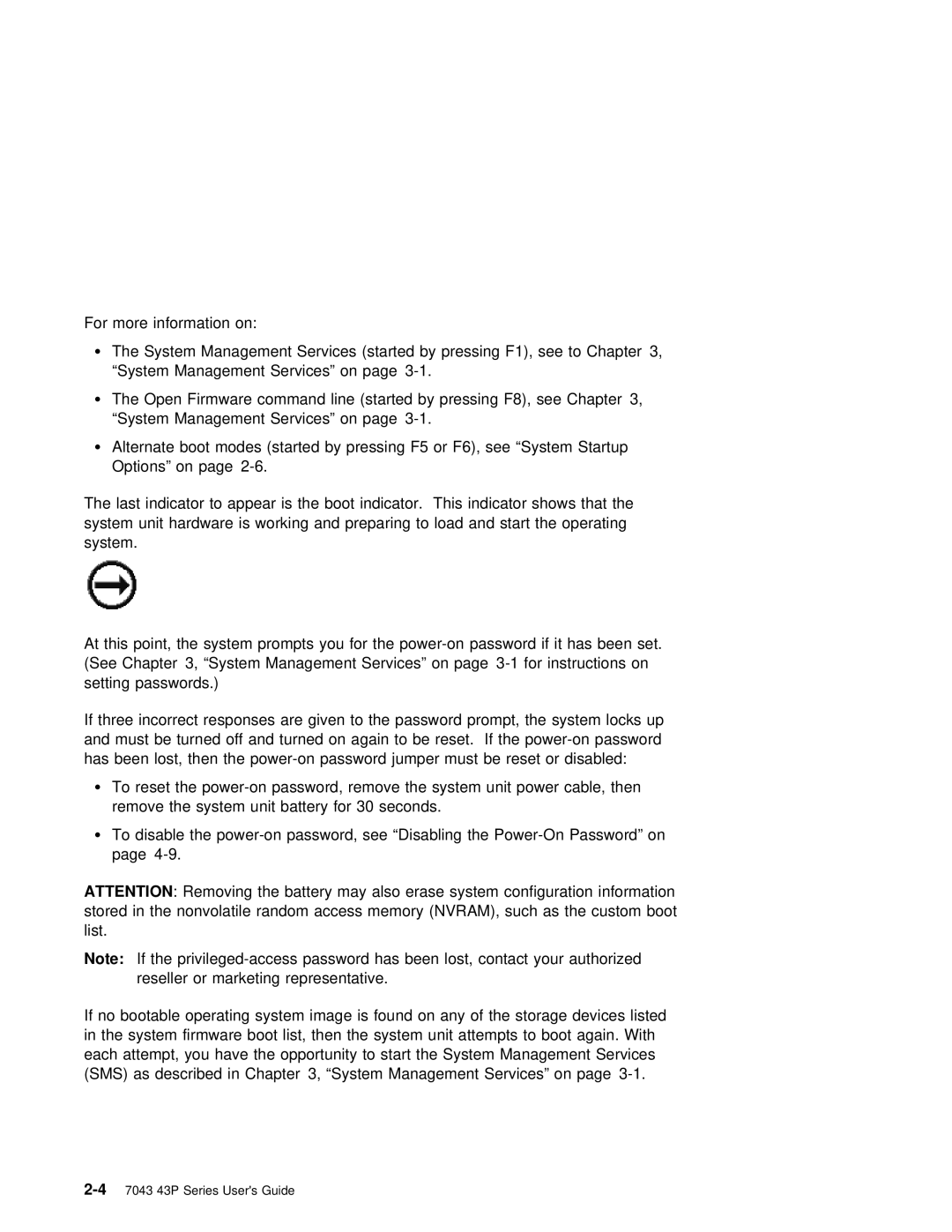For more information on:
ŸThe System Management Services (started by pressing F1), see to Chapter
“System Management Services” on page
ŸThe Open Firmware command line (started by pressing F8), see Chapter 3,
“System Management Services” on page
ŸAlternate boot modes (started by pressing F5 or F6), see “System Startup Options” on page
The last indicator to appear is the boot indicator. This indicator shows system unit hardware is working and preparing to load and start the oper system.
At | this | point, | the | system prompts you for the | password | if | it | ha | ||||||
(See Chapter 3, “System Management Services” | on | page | for | instructions | on | |||||||||
setting | passwords.) |
|
|
|
|
|
|
|
|
|
| |||
If | three | incorrect | responses are given to the | password | prompt, | the | syst | |||||||
and | must | be | turned | off | and turned on again | to | be reset. If | the | power | |||||
has | been | lost, then | the | jumper | must | be reset | or | disab | ||||||
ŸTo reset the
remove the system unit battery for 30 seconds.
ŸTo disable the
ATTENTION : Removing the battery may also erase system configuration inform stored in the nonvolatile random access memory (NVRAM), such as the custom list.
Note: If the
If | no | bootable operating system | image | is | found on any of the storage d | |||
in | the | system | firmware boot | list, then | the | system unit attempts to boot | ||
each attempt, | you | have the | opportunity | to start the System Management Serv | ||||
(SMS) | as | described | in Chapter 3, | “System | Management Services” on page | |||
